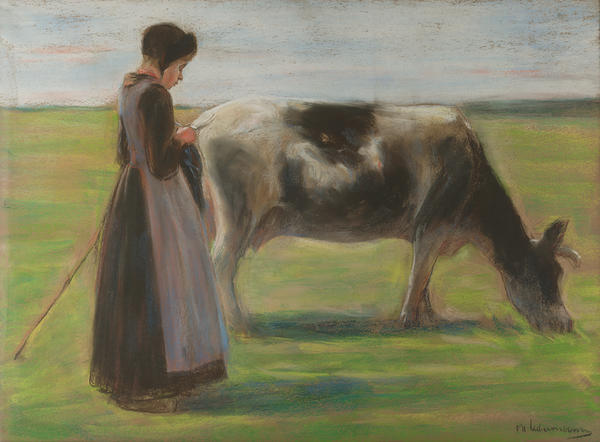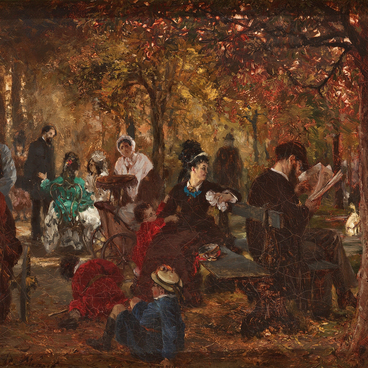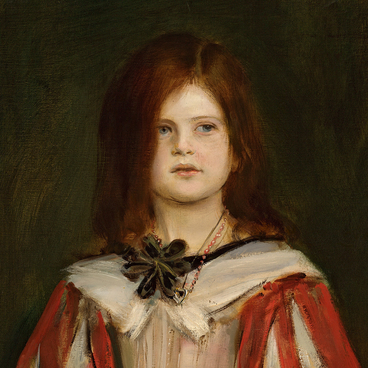The name of Max Liebermann has long been associated with German impressionism. He studied in Berlin and the Wiemar Art School, and then he improved his skills in Paris and Barbizon. When he returned to Germany, he worked in Munich and then Berlin. Max Liebermann was an iconic figure of German realistic art. He was one of the founders of the Berlin Secession, as well as its first president. His life and career were full of paradoxes. In his early days, his austere realism was not welcomed by the upper class art lovers. When he matured as a painter, he became a trendy portraitist favored by the noble German bourgeoisie. In his later years in Nazi Germany, Max Liebermann, the son of a powerful banker, Jewish by ancestry, fell into disgrace. In 1884 during a summer journey in the Netherlands, Liebermann became acquainted with the painter Anton Mauve. In that time a new character appeared in his art works – a shepherd girl. It was not only due to the influence of Anton Mauve, but also Jean-François Millet. Liebermann painted a number of artworks with this motif using various techniques: graphics, pastel, and oil. The artwork that belongs to the Pushkin Museum is done with pastel on paper. This technique made it possible for him to fulfill two roles: that of a drawing artist and a painter. This artwork combines a number of interesting features: static material figures and an impressionistic interpretation of the landscape, with accurately rendered looming light and air blurring out the contours and outlines. Making an epic interpretation of a scene that was spotted by chance is quite a typical feature for this particular period in Liebermann’s career.
Girl with a Cow
Creation period
1880s
Dimensions
55x74 cm
55х74
55х74
Technique
paper, pastel
Collection
Exhibition
3
Open in app#1

Max Liebermann
Girl with a Cow
#2
read morehide
00:00
00:00
1x
Girl with a Cow
Creation period
1880s
Dimensions
55x74 cm
55х74
55х74
Technique
paper, pastel
Collection
Exhibition
3
Open in app
Share



